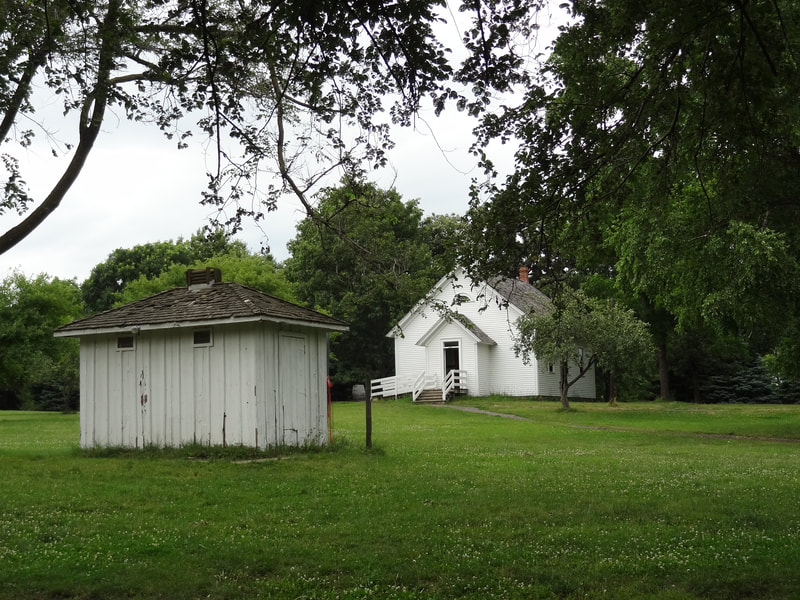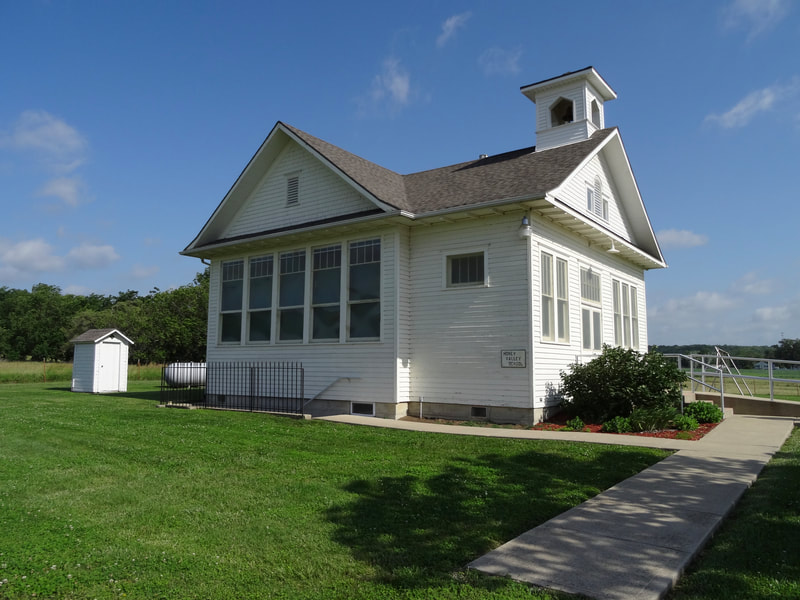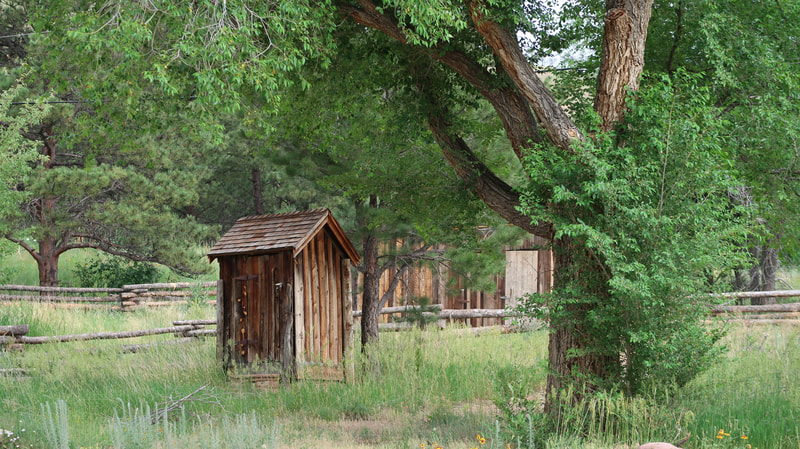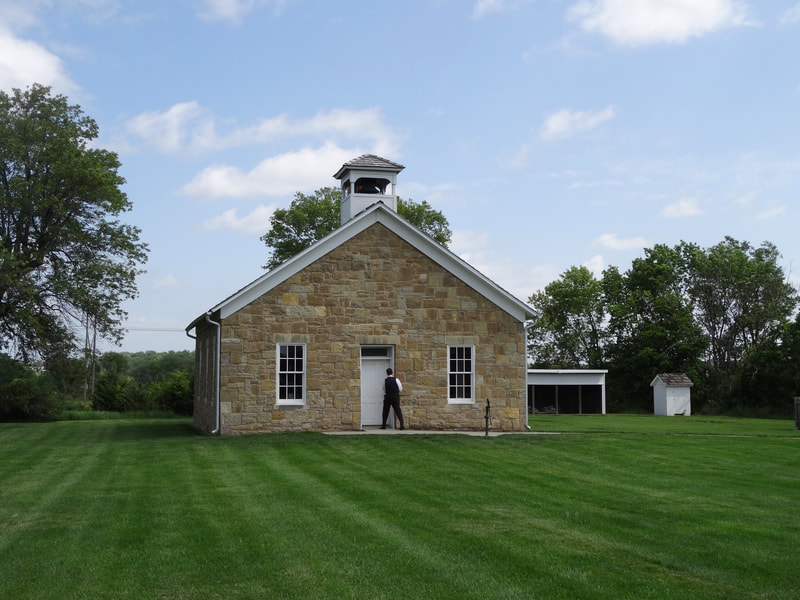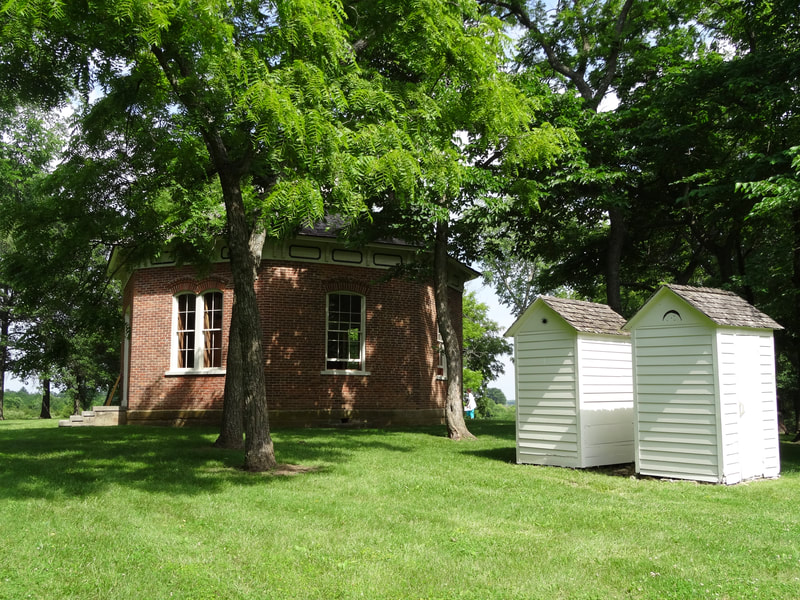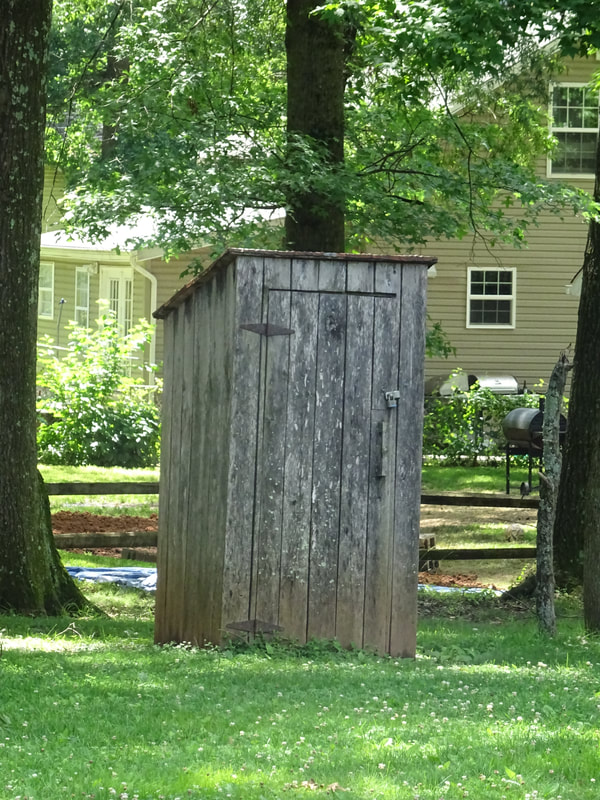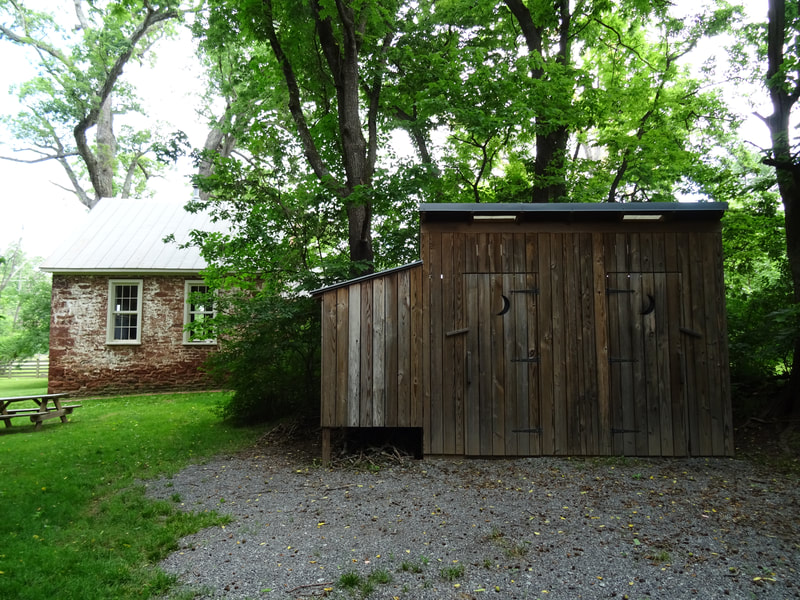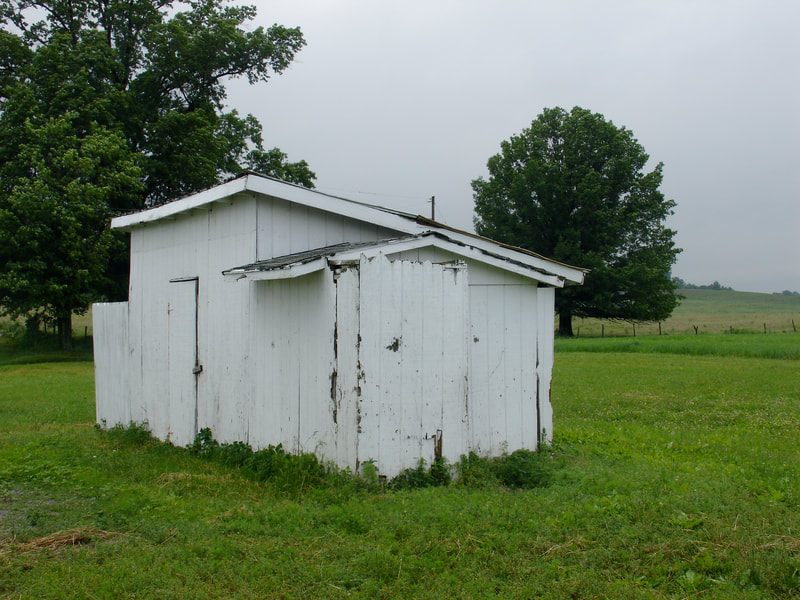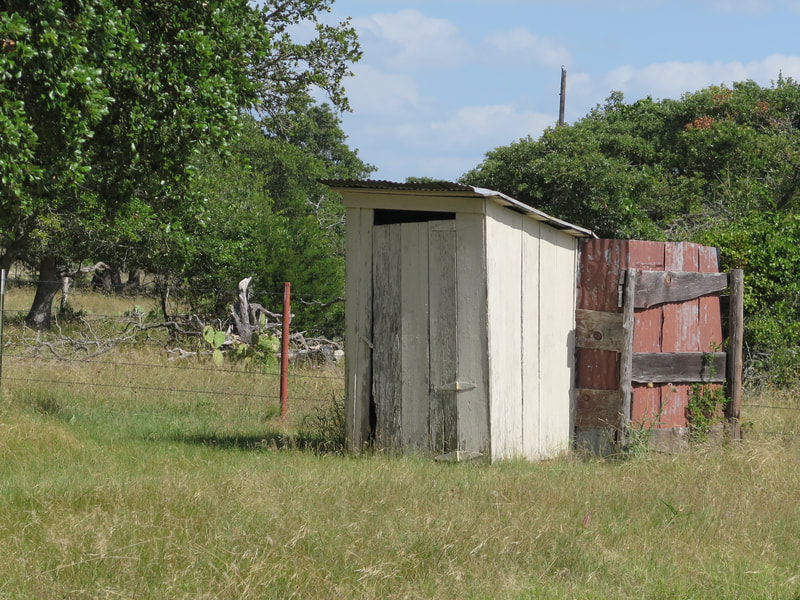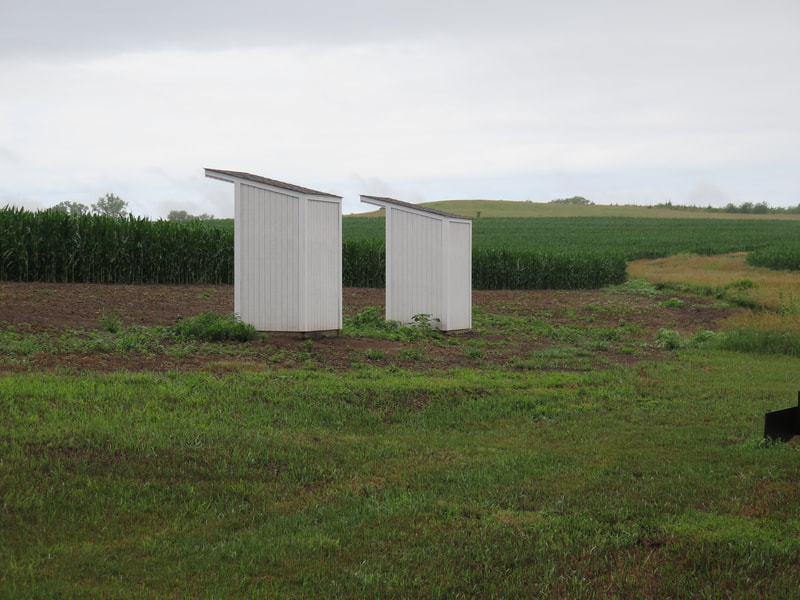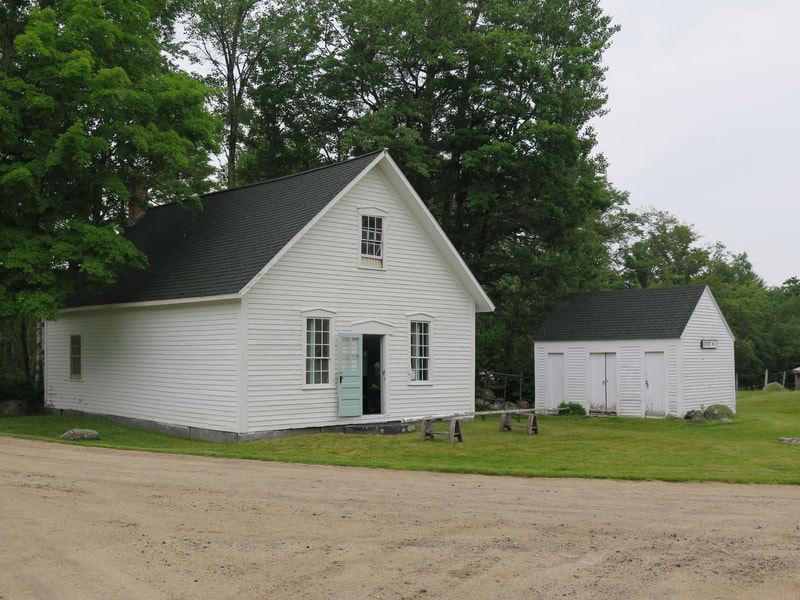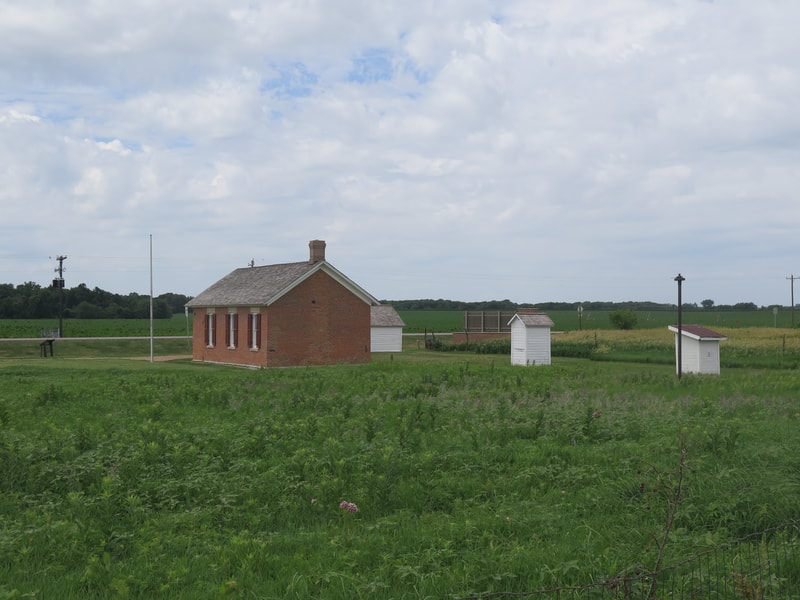|
Proud of Our Privies: Need Some Reading Material?
It is interesting to note how proud country school preservationists are when they say their schoolhouse still has the "original privies." Sometime back, a visitor to our website asked if we had any information on how to build a "two-holer." Our members came up with some very interesting answers proving they have some particular knowledge of these rustic "throne rooms." Richard Lewis of West Bay Common School Museum wrote: “If you want better quality and better choices of plans, you may want a book entitled - The Vanishing American Outhouse: Privy Plans, Photographs, Poems, and Folklore, by Ronald Barlow. Mike Day wrote, "There is a delightful little book that I would recommend to anyone thinking about privies; it's called "The Specialist," by Charles (Chic) Sale, copyright 1929, renewed 1956. It appears to be a speech by a man who is quite proud of the special skills he has developed in his particular line of work, the design and construction of outhouses. I'm not sure just how seriously to take it, but it does cover many of the fine points that us modern types would not know to consider when building an outhouse. It's a cute little book - 27 pages - and a number of copies are available from Amazon. Not really a schoolhouse book, but fun anyway. Fay Stone of the Pioneer Sholes Schoolhouse wrote: "Privies were usually a simple tall box with no windows but a design (often a new moon) cut high in the door for light. The roof was slanted to allow snow and rain to run off. The important thing was the two holes. A considerate builder would make one side lower than the other, for smaller people, and the hole smaller for obvious reasons. Sometimes they had a lid, but rarely. I doubt there was ever a written plan. If I were making one for use today, I'd include a simple hinged lid, as it cuts down on odor. We dug in a large metal barrel split into half under the holes, and they were pumped out often by the caretaker or garbage crew. We built a fence between boys and girls and planted a vine along it." Recollections about school privies abound, but a recent post in the Washington County, WI Outsider (March 25, 2024) by Dave Bohn of West Bend, Wisconsin was also instructive. "There was an outhouse behind the school near the woodshed. We would have to bundle up in the winter to go out and use it. In cold weather, not too much time was spent in the outhouse. The toilet was a two-holer without any partition in between. It was just a plank seat and the area between the two holes was maybe a foot. I don’t ever remember using the outhouse with another kid in there, but maybe the second hole was a slightly smaller size for the little kids. I don’t really remember though. The toilet paper was yesterday’s newspaper. Lime was used to keep the smell under control. The lime was poured down the hole every few days. This helped absorb the odor and helped compost the contents of the outhouse. Using lime was common for all outhouses at the time. Lime is a stone crushed really fine and the stone was very easy to come by, as there was a lot of limestone in the area." Research has been done by others already, so enjoy your journey through the story of buildings that have always been "necessary." Here are some suggestions found on Amazon, Abe Books or Alibris: Passing of the Outhouse, by Tom G. Murray The All-American Outhouse: Stories, Design & Construction, by Bob Cary Nature Calls: The History, Lore and Charm of Outhouses, by Dottie Booth (Very Funny!) Outhouses by Any Other Name, by Tom Harding Ode to the Outhouse: A Tribute to a Vanishing American Icon by Roger Welsch Outhouses, by Roger Welsch Flushed with Pride, The Story of Thomas Crapper by Wallace Reyburn Outhouse Humor, by Billy Edd Wheeler In researching the books, we found that outhouses have many other supporters out there, as evidenced by a calendar, a shower curtain, a rustic sign with outhouse rules, and hand towels with an outhouse motif. Good luck in your research!
0 Comments
Leave a Reply. |
Our early public schools systems were indeed disparate, but a common thread among early districts was that children of all ages were taught together in the one-room schoolhouse" Blog Archives
July 2024
|

